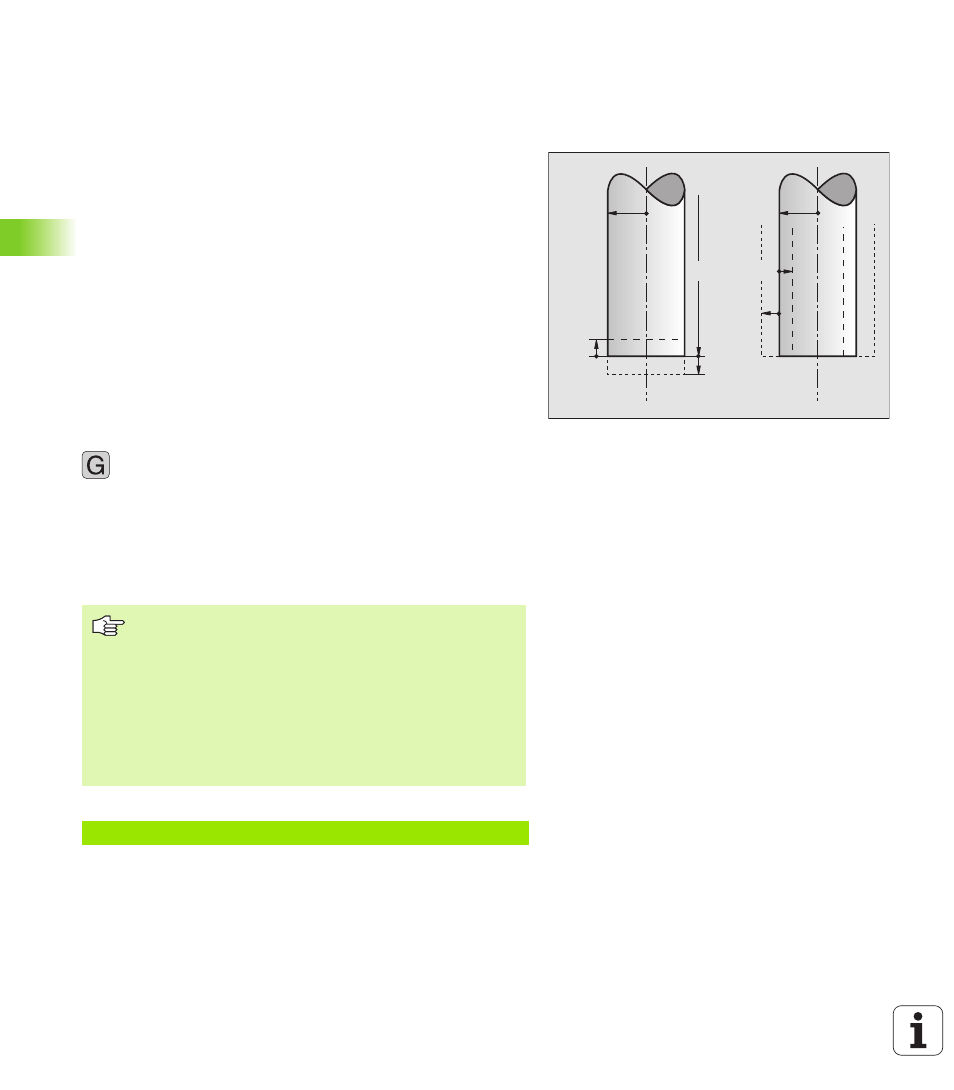Tool radius r, Delta values for lengths and radii, Entering tool data into the program – HEIDENHAIN TNC 410 ISO Programming User Manual
Page 126: 2 t o ol d a ta

100
5 Programming: Tools
5.2 T
o
ol D
a
ta
Tool radius R
You can enter the tool radius R directly.
Delta values for lengths and radii
Delta values are offsets in the length and radius of a tool.
A positive delta value describes a tool oversize (DL, DR>0). If you are
programming the machining data with an allowance, enter the
oversize value with T.
A negative delta value describes a tool undersize (DL, DR<0). An
undersize is entered in the tool table for wear.
Delta values are usually entered as numerical values. In a T block, you
can also assign the values to Q parameters.
Input range: You can enter a delta value with up to ± 99.999 mm.
Entering tool data into the program
The number, length and radius of a specific tool is defined in the G99
block of the part program.
U
U
U
U
Select tool definition. Confirm your entry with the ENT
key.
U
U
U
U
Enter the Tool number: Each tool is uniquely identified
by its number.
U
U
U
U
Enter the tool length: Enter the compensation value
for the tool length.
U
U
U
U
Enter the Tool radius.
Resulting NC block:
DR<0
DR>0
DL<0
R
DL>0
L
R
In the programming dialog, you can transfer the value for
tool length directly into the input line.
TNC 426, TNC 430:
Press the actual-position-capture key. You only need to
make sure that the highlight in the status display is placed
on the tool axis.
TNC 410:
Press the ACT. POS. Z soft key.
N40 G99 T5 L+10 R+5 *
99
